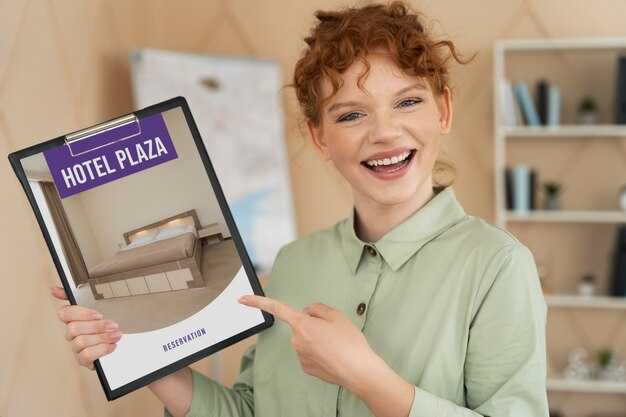Give guests a welcome tour in the first 5 minutes. Show where to find keys, the Wi‑Fi code, and the closest grocery or pharmacy. A welcoming start reduces back-and-forth questions from guests and sets a positive tone.
Clear communication is paramount. Build a detailed house manual in clear English with sections for Essentials, Appliances, Safety, and Local tips. Include an initial checklist and a short video that demonstrates operating the coffee maker, lights, and thermostat. Place a printed copy in the kitchen drawer and a digital version in the host dashboard so guests can read from their phones.
Clarify damages policy: guests are responsible for damages beyond normal wear and tear; outline how to report issues within 24 hours; specify any security deposit or hold and how to contact you during the stay.
If your listing includes a pool, post safety guidelines, depth markers, and supervision requirements. Use a clearly visible sign near the pool and add a short video showing how to operate the cover and alarm. State pool hours, cleaning days, and the location of safety gear within minutes’ walk of the pool area.
Provide practical touches that enhance the guest experience: a simple coffee station, extra towels, basic supplies, and a well-organized entry. When choosing items, aim for something that minimizes friction and makes guests feel cared for, such as a labeled switch map and a printed map of the closest transit stops.
Answer urgent questions within minutes and send a friendly welcome within initial hours after booking. A quick, video-based tour helps guests locate important features without dialing you first. This can transform the perceived hospitality and reduce interruptions during check-in.
Keep the manual up to date by recording changes with a date stamp. After each stay, review feedback and update kitchen instructions, bathroom amenities, and checklists. Share highlights of changes with returning guests to show something new and helpful.
From first contact to checkout, the aim is an excellent and smooth stay. Your updates, tools, and proactive hosting will transform how guests rate the space, driving repeat bookings and positive reviews.
Clear Check-in Process: Access Details, Codes, and Timing

Provide a single, predictable check-in window and send access details 24 hours before arrival to make the process easier for youre guests. Include the exact time window (for example, 3:00 PM–7:00 PM local time), a 4-digit code or secure entry method, and clear directions to the entry point. Pair this with a short welcome note and a quick reminder about house rules to set expectations right away.
Access Details

The lockbox is located beside the front door, tucked behind a planter. The code is 4-digit and changes monthly; share it via your guest app and include it in the tablet guide. If you use a smart lock, provide steps to unlock with the tablet and confirm that entry remains safe. Proactively sending the access details, the location, and backup instructions helps guests arrive smoothly. For airbnbs, attach a rich set of photos and a short videos tour showing exactly where to find the entry and how to use it. Remind guests to keep codes private and avoid posting them publicly to reduce theft risk. Include basic insurance information or host contact in the tablet for quick reference. Recently updated access details help you deliver an authentic, reliable arrival experience. You can also include notes to help guests find the kitchen and start everyday activities, and suggest local places to book tours or experiences.
Timing and Communication
Publish a clear check-in window, such as 3:00 PM–7:00 PM local time, and offer a limited late check-in option with advance notice. If a guest arrives outside the window, respond quickly and coordinate a safe solution. Sending a reminder 12–24 hours before arrival and again on the day of arrival via your tablet or messaging channel keeps everyone aligned. Include a short note about where to find the kitchen and how to use features and amenities, and point guests to local events to help them settle in. This approach helps guests know what to expect and creates an authentic arrival. Review the check-in flow after each stay to capture feedback and identify ways to improve the experience for future guests and stays.
What to Include in a Welcome Guide for Your Guests
Include a reservation-specific welcome section listing initial check-in time, entry codes or key pickup steps, and the host contact numbers for the stay. This upfront detail reduces post-booking questions and keeps guests moving smoothly from arrival to settling in. Use the word welcome prominently on the first page to set tone; this is paramount to a smooth start, and most guests appreciate a clear path from day one.
Give a simple map of the house flow with room names, where to find the appliances, and how to operate the coffee maker, thermostat, washer, and dryer. Include quick one-line operating notes for the most-used items to make easy decisions during their stay, while guests are becoming more confident in handling things on their own.
Explain safety and damages clearly. State what counts as damages, the process to report issues, and how extra charges are determined. Include a minimal damages checklist guests can use before checkout to avoid misunderstandings.
House Rules and Safety
Set pool and outdoor area rules: hours, supervision, footwear, and what to do in case of rain or wind. Mention nearby beaches, parking guidance, and how to access local transit if guests want to explore without a rental car. This keeps guests informed while they enjoy the space and surroundings.
Provide a simple guide to amenities and rooms: where towels live, how the laundry works, where to find extra linens, and where to store groceries so the kitchen stays organized. These notes assist creating a smooth space, and include short videos to help learn operation while guests are still arriving. The initial setup is easy to grasp even during the first stay, while they settle in and become comfortable.
Close with a plan for support and feedback. Basically, guests increasingly rate clear instructions as a key factor in a comfortable stay. Invite guests to share thoughts through a quick form or chat, and explain how you use analytics to identify common questions and continuously improve the guide. They will see the time you invest paying off in higher satisfaction and fewer reservation-specific questions.
House Rules That Keep Guests Safe, Comfortable, and Respectful
Post a one-page safety cheat sheet in the entry that covers the first steps in an emergency, directions to the closest exit, how to reach the host by a quick call, and where to find safety gear like the smoke detector test button and the fire extinguisher.
Focus on creating a welcoming baseline for guests with a quick tone and an easy, accessible format. Use clear language and provide the needed information on check-in/out, occupancy, quiet hours, and policies on pets or smoking. Add interactivity with a short checklist guests can tick off during their stay.
Set clear expectations to prevent misunderstandings: no stealing, care for the space, and responsible use of shared facilities. Encourage guests to build a respectful routine, like turning off lights when leaving and cleaning up after cooking, which helps first-time visitors feel at ease and stay in harmony with neighbors. Changes to rules will be posted in the guest manual, and explained during check-in to keep everyone on the same page.
Emergency and Access Details
During emergencies, follow posted directions, use the closest exit, and contact the host or emergency services if needed. The house includes accessible features such as step-free entry and labeled switches; share where to find the water shut-off valve and the electrical panel in case of a leak or outage.
Insurance and safety: guests should think about their own coverage, as host insurance typically does not cover personal belongings. For airbnbs hosted by me, remind guests to bring appropriate coverage or purchase travel insurance; it helps reduce risk during unexpected events.
Guest Troubleshooting: Quick Fixes for Common Issues
Restart the router and modem, then re-test Wi‑Fi on a phone and a laptop. Update the password on the printed guide and confirm it on the platforms you use to manage listings. For efficiency, keep a one-page quick guide in the welcome folder with the exact steps, the hotspot backup option, and the contact number. If the issue persists, log a ticket with time, device type, and signal strength, and offer to assist via phone until the line stabilizes, which is faster than waiting for a technician. If they need more details, point them to the printed guide. Youre guests will feel covered and confident when they have a clear path to fix common faults, not worry about not having support.
Connectivity and Tech
During peak check-in times and departure times, thank them for their patience and let them know you want to keep tech functioning smoothly, and use your knowledge to refine the guide so they can easily follow along.
If they cant resolve it right away, propose a backup like streaming from a mobile hotspot and keep them updated until the issue is fixed.
Comfort, Amenities & Essentials
Audit amenities and ensure items promised are present. If something is missing, offer a fast replacement or a small discount and note it for refine in the system. Provide maps of local transit, grocery stores, and attractions in printed form and via messages on the platforms. This approach reduces calls and speeds up check-in and departure planning. Prepare a welcoming kit with rich touches like extra batteries, phone chargers, tissues, and a bottle of water so they feel welcoming and covered. Stock guest-friendly basics to meet common needs and prevent complaints during peak times, then share your knowledge of nearby options to help guests choose quickly and build long-term trust with guests.
Local Tips and Maps: Personal Recommendations Tailored to Your Space
One thing: provide a curated, printable map pack on the left side of the welcome binder, with six highlighted stops and a quick route from the property.
Each suggestion aligns with the space’s purpose–whether you host families, solo travelers, or business stays–so guests can plan stays that fit their wants.
Guests asked for local ideas, so you’ll also create a two-line note about what to do in the area, creating a sense of place and reducing frustration.
Include a number of stops–six is a practical balance–and cover food, coffee, groceries, a park, and a cultural amenity, with distances, a brief why, and hours.
Highlight the authenticity and reliability of amenities around the space; note quiet times and family-friendly options so both work and leisure fits.
Neighborhood Highlights
Below is a concise table of what guests are likely to use, with number of minutes from the door and quick reasons to visit.
| Miesto | Vzdialenosť | Why Visit | Tip | Platforms |
|---|---|---|---|---|
| Sunrise Café | 0.4 mi (0.6 km) | Morning coffee, solid wifi, cozy seating | Ask for a seat near outlets; try the almond pastry | Maps, Apple Maps |
| Riverside Market | 0.6 mi (1.0 km) | Fresh produce, bakery, grab-and-go meals | Bring a reusable bag; check daily specials | Maps, Google Maps |
| Emerald Park | 0.7 mi (1.1 km) | Relaxed stroll, kids’ play area | Best at sunset; wear a light jacket | Mapy |
| The Stage Collective | 0.9 mi (1.4 km) | Local music and entertainment on weekends | Check schedule in advance; arrive early | Maps, Platform X |
Interactive Maps and Quick Access
We include interactive maps and a QR code that opens the same list on your phone, helping guests stay oriented without pulling out a phone repeatedly. The pack works offline and on multiple platforms, so guests can switch where they view directions. This interactivity makes it easy to tailor a quick plan for art, food, and downtime, absolutely reducing the chance of frustration. However, if you prefer print-only, you can still benefit from the key recommendations.
Communication Plan: Availability, Expectations, and Response Windows
Set exact response windows: answer urgent questions within 1 hour during stay, and all other inquiries within 4 hours, and publish these windows in the house manual and on printed welcome notes for quick reference.
Tailor each message to the guest’s stay, adopt a warm tone, and share specific guidance on towels, pool rules, water safety, and local activities. Include a simple check-in flow and a fingertip-ready checklist covering essentials, how to reach you, and where to find house rules; use tech or a google form to receive requests in advance.
Keep availability and expectations aligned by using one platform for coordination when possible, so guests can navigate conversations without confusion. As the host, provide clear instructions for checking in, locating the house guide, and accessing amenities like towels and pool equipment; enhance guest comfort with concise, actionable steps that feel helpful and welcoming.
Availability and Check-In Windows
Offer a fixed check-in window (for example, 3 PM–8 PM) and publish late-arrival procedures: self-check-in with a lockbox, explicit directions, and a backup contact. Prepare advance instructions for parking, entry routes, water shutoffs, and emergency contacts. Place a printed card in the house with quick steps and a digital version in your guest guide, so visitors always have exact references at hand.
For flexibility, include a late-arrival option based on availability and replaceable keys or codes; ensure guests receive a calm, friendly tone when paving the path from arrival to stay. When choosing arrival methods, tailor them to the property layout and guest needs to minimize friction and maximize comfort.
Response Times, Channels, and Tools
Communicate that you respond to messages within 1 hour for urgent matters and within 4 hours for non-urgent inquiries; encourage guests to use preferred channels (platforms) but keep a single thread for history. Use a consolidated log to help navigate conversations, track requests, and share suggestions for nearby activities, dining, and water-access tips.
Offer multiple channels (Airbnb messages, SMS, or a google form for special requests) and note response expectations in advance; provide a quick template for common questions about house rules, check-out steps, and amenities. Share a concise schedule of when you are available, and set expectations about response windows so guests feel supported without needing constant follow-ups.
About Us Page: Share Your Story, Values, and Hosting Style
Lead with a concise bio: who you are, why you host, and what guests can expect from a stay. theres a warmth that invites travelers to feel at home, and the tone you choose should reflect that in every line.
Use a simple, scannable layout and concrete details so guests can picture themselves in your space.
- Story, values, and hosting style: Write 2–4 short sentences that explain your background, what matters to you, and how you host (quiet and thoughtful, or vibrant and hands-on). Include a couple of local favorites to show you know the area.
- Media and guides: Add a clear photo, a brief video tour of the space, and a short neighborhood guide. Provide links to public listings of nearby attractions and transit options to help travelers plan their days.
- Templates and downloads: Provide a downloadable one-page bio template and a quick form for updates. Use a simple process to gather input from you and co-hosts, then publish changes. Update content proactively every few months and after any major change; you can download the template, fill in updates, and re-publish.
- Communication and channels: State how guests reach you (phone, app messages, or email) and your typical response time. Set expectations for check-in, emergencies, and daily greetings.
- Safety, insurance, and departure details: Outline safety rules, insurance considerations if relevant, and departure procedures. Clarify check-out steps, return of keys, and where to leave used items for cleaning.
- Surroundings and accessibility: Describe the surrounding area, parking, transit options, and accessibility features. This helps travelers plan and makes your listing more welcoming for guests with special needs.
- Transparency, trust, and originality: Public listings reflect current space details. Avoid copying content from other hosts; steal nothing and share your own voice. The pros of this approach include clearer expectations and better customers, leading to higher satisfaction and more bookings.
- Maintenance and updates: Schedule regular checks on links and contact info, refresh photos, and adjust guides to reflect new eateries and services. Proactively invite suggestions from guests and co-hosts to refine wording and keep the page accurate.



Komentáre